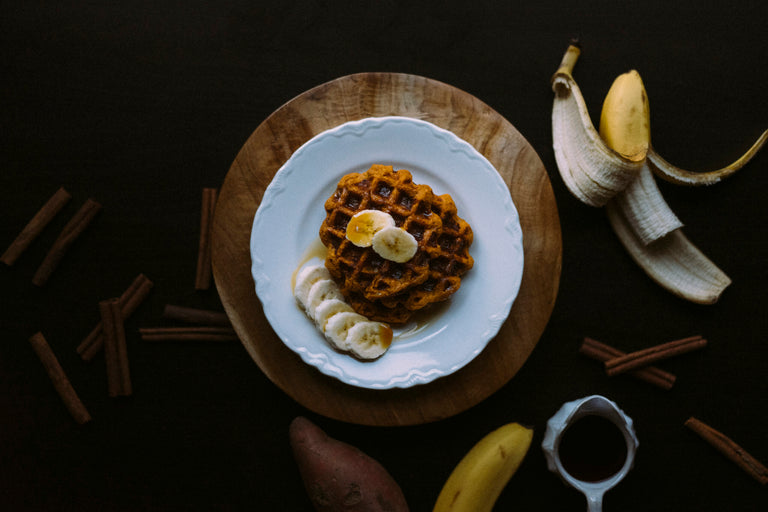Fear foods are specific foods (or food groups) that a person is afraid to eat. Someone may avoid these foods due to fear of weight gain or because they feel out of control around them. This food may incite anxiety or the person may think obsessively about them.
While fear foods are commonly associated with eating disorders, those without eating disorders can also have fear foods. That’s right – you don’t need to have an eating disorder to have disordered eating habits! According to the National Eating Disorders Collaboration, “Disordered eating sits on a spectrum between normal eating and an eating disorder and may include symptoms and behaviours of eating disorders, but at a lesser frequency or lower level of severity.”
Avoiding particular foods out of fear – without medical reason – is a disordered eating habit. It’s important to understand this concept because a positive food relationship is important for your well-being as well as for eating disorder prevention.
With the holidays upon us, learning how to approach fear foods can help a person participate in celebrations, enjoy their favorite foods, and cultivate a healthier relationship with food. The following are some of the strategies I use when helping someone improve their relationship with food, which is essential for getting strategic about performance nutrition.

Change how you think about food
If you’ve gotten into the habit of labeling foods “good” and “bad,” this is a good place to begin. Foods are not good nor bad – they have no moral value. Some foods are healthier than others, but this doesn’t mean less healthy foods are “bad” or to be avoided entirely.
Similarly to labeling foods as good and bad, it’s also helpful to ditch the habit of calling foods “clean.” If you catch yourself labeling foods as good, bad, or clean, challenge yourself to find another word that better describes the food. It can also be helpful to do a social media audit of food accounts and unfollow those who use this language around food.
Place the food on (or next to) your plate at a regular meal
When you’re feeling up to it, go ahead and challenge the fear food. When we take a fear food – let’s say it’s a chocolate chip cookie – and we put that cookie directly onto our dinner plate, we associate it with “regular” foods. We take away the idea that the food is forbidden and make it part of our planned intake. Your fear food may also be something like potato chips, which also works great on your plate with an otherwise regular meal! This is by far my favorite way to change how we view fear foods.
To make this challenge even more helpful, you may choose to journal how you feel before, during, and after your meal so that you can begin to identify patterns that need some TLC.
Make it a celebration
Oftentimes, it isn’t just guilt and fear that we feel when eating a fear food. It’s also a feeling of being out of control in an unplanned situation – hence why you may just avoid it in the first place. You can never have just a little bit and feel awful when you overdo it!
Instead of surrounding your fear food with feelings of a lack of control (plus guilt, shame, etc.), surround it with positive emotions. Make a plan to have your fear food, and create time and space in your life for something you really enjoy.
For example, if you’re craving cake but also fear indulgent desserts, make a plan to have the cake (and really go all out if you want!) It doesn’t even need to be a social event, though it certainly can if having supportive people around you is helpful. If you want to have a solo self-care night with a dinner you love, some cake, and your favorite classic movie, that’s a wonderful way to bring that fear food into your life with positive emotions in a controlled manner.

Avoid making a habit of finding “healthy” alternatives to your fear foods.
Sometimes healthy alternatives can be a fun way to enjoy and experiment with food. But if you’re consistently replacing your fear food with an alternative without relief from your cravings, then you may be doing a disservice to yourself.
Remember that food restriction often results in cravings and overeating that particular food when allowed. By allowing yourself to indulge when the cravings kick in, you may actually reduce your cravings overall.
I love to relate this to kids and pizza when explaining the concept. If a kid said, “I could eat pizza for the rest of the year and be happy,” they would probably eat pizza for two days and call it quits. Whereas if you said, “We’re not eating pizza again until next month,” they may ask for pizza every day. Adults are basically large kids!
Ask for help
Sometimes, help is just what you need. Food relationships can be incredibly complex to navigate on your own. It can help to have a trustworthy, unbiased person help you work through it. For example, a qualified nutritionist, registered dietitian, or therapist can help you! Oftentimes, having both a nutritionist/dietitian and a therapist can make an amazing support team for you.




